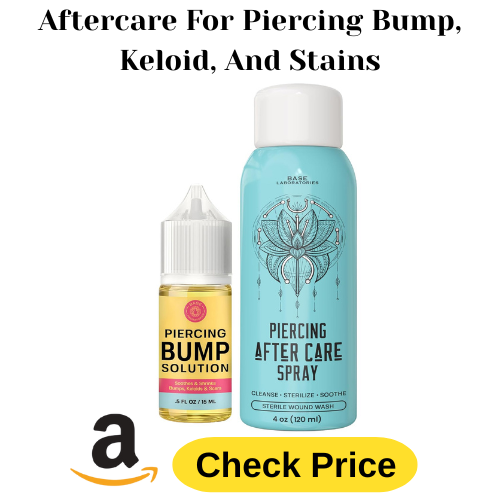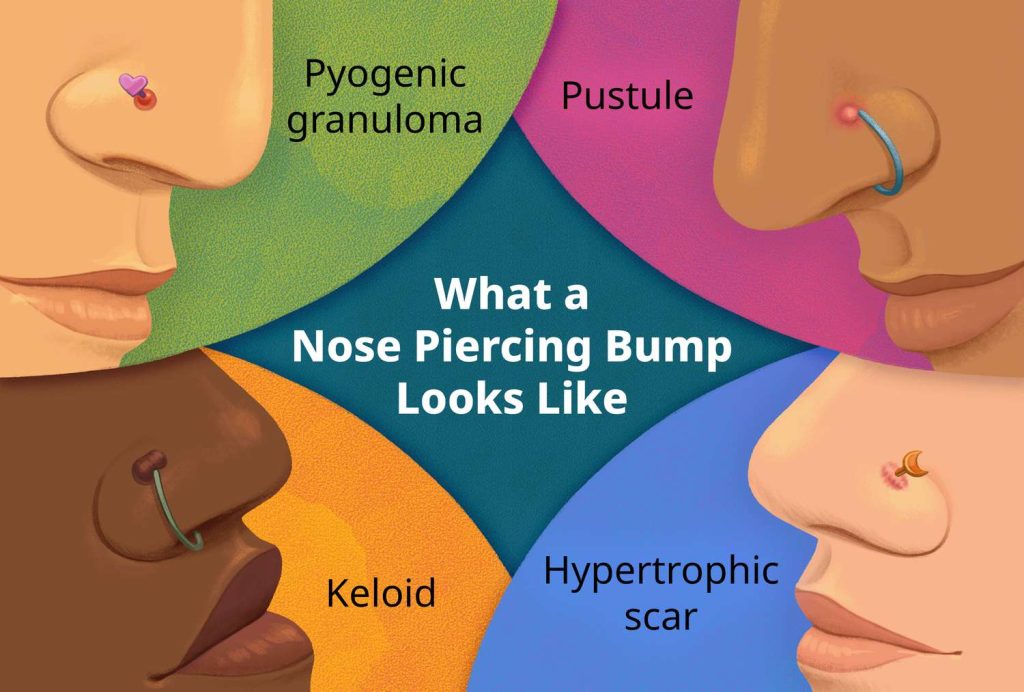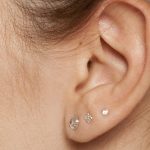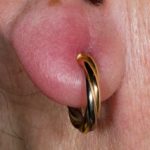Keloids can be a worry for many people. They often form after a nose piercing. They can look big and feel uncomfortable. This article explains how to deal with keloids. We will cover what keloids are, why they happen, and how to treat them.
What Are Keloids?
Keloids are thick, raised scars. They grow over a wound. They can be larger than the original injury. Keloids can happen to anyone. However, some people are more likely to get them. These include:
- People with darker skin
- People with a family history of keloids
- People who are young or pregnant
Keloids can appear anywhere on the body. They are common on ears, shoulders, and noses. They can be itchy or painful. But, they are not harmful. They are not a sign of a serious problem.
Aftercares To Get Rid Of Keloids On Nose Piercing

Credit: www.youtube.com
Why Do Keloids Form?
Keloids form when the body heals a wound. The body makes collagen, which helps to heal. Sometimes, too much collagen is made. This leads to a keloid. Nose piercings can cause keloids because of:
- Infection
- Poor healing
- Too much tension on the skin
Even a small injury can cause a keloid. It is important to take care of your piercings. This can help prevent keloids.
How to Prevent Keloids
Prevention is the best way to avoid keloids. Here are some tips:
- Choose a professional piercer.
- Use high-quality jewelry.
- Keep the area clean.
- Do not touch the piercing with dirty hands.
Following these steps can help you avoid keloids. It is important to be careful after getting a nose piercing.
How to Treat Keloids
If you already have a keloid, don’t worry. There are ways to treat it. Here are some options:
1. Silicone Gel Sheets
Silicone gel sheets can help reduce the size of keloids. They work by keeping the area moist. You can find silicone sheets at drugstores. Follow the instructions on the package.
2. Corticosteroid Injections
Corticosteroid injections can reduce keloids. A doctor can give these injections. They help to flatten the keloid. You may need more than one injection. Ask your doctor for advice.
3. Cryotherapy
Cryotherapy is a method that freezes keloids. It can help shrink them. This treatment is usually done in a doctor’s office. It may take several treatments for good results.
4. Surgery
In some cases, surgery can remove keloids. However, keloids can come back after surgery. Talk to a doctor to see if this option is right for you.
5. Laser Therapy
Laser therapy can help improve the look of keloids. It uses light to reduce redness and size. This treatment is done by a dermatologist.
Home Remedies for Keloids
Some people prefer home remedies. Here are a few you can try:
1. Aloe Vera
Aloe vera can soothe skin. It may help reduce keloids. Apply fresh aloe vera gel to the keloid daily.
2. Apple Cider Vinegar
Some people use apple cider vinegar. It may help flatten keloids. Mix it with water and apply it to the keloid.
3. Honey
Honey has healing properties. It can help with skin health. Apply honey to the keloid and leave it for 30 minutes.
When to See a Doctor
Sometimes, home remedies may not work. If your keloid does not improve, see a doctor. You should also see a doctor if:
- The keloid becomes painful.
- It changes color.
- It grows larger quickly.
Doctors can provide better treatment options. They can help you find the right solution.

Credit: www.amazon.com
Living with Keloids
Living with keloids can be hard. They may affect how you feel about yourself. Here are some tips to help:
- Talk to friends and family about your feelings.
- Join a support group if needed.
- Focus on things you like about yourself.
Remember, keloids do not define you. Many people have them. You are not alone in this.
Frequently Asked Questions
How Can I Prevent Keloids On My Nose Piercing?
Keeping the area clean and avoiding irritation helps prevent keloids. Use a gentle cleanser and avoid touching the piercing.
What Are Common Treatments For Keloids?
Common treatments include silicone sheets, corticosteroid injections, and laser therapy. Each option has different effectiveness.
Can Keloids Disappear On Their Own?
Keloids rarely disappear on their own. They often require treatment to reduce their size or appearance.
Is It Safe To Remove A Keloid?
Removing a keloid can be safe, but it may grow back. Consult a dermatologist for the best approach.
Conclusion
Keloids can form after nose piercings. They are thick scars that can grow larger than the original wound. There are many ways to treat and prevent them. From silicone sheets to medical treatments, options are available. Always consult a doctor for the best advice.
Taking care of your piercing can help. If you do have a keloid, there is hope. Treatments can help reduce its size. Remember, you are not alone. Many people deal with keloids. With the right care, you can find relief.
Stay informed and take care of your skin. Your health and happiness matter the most.




